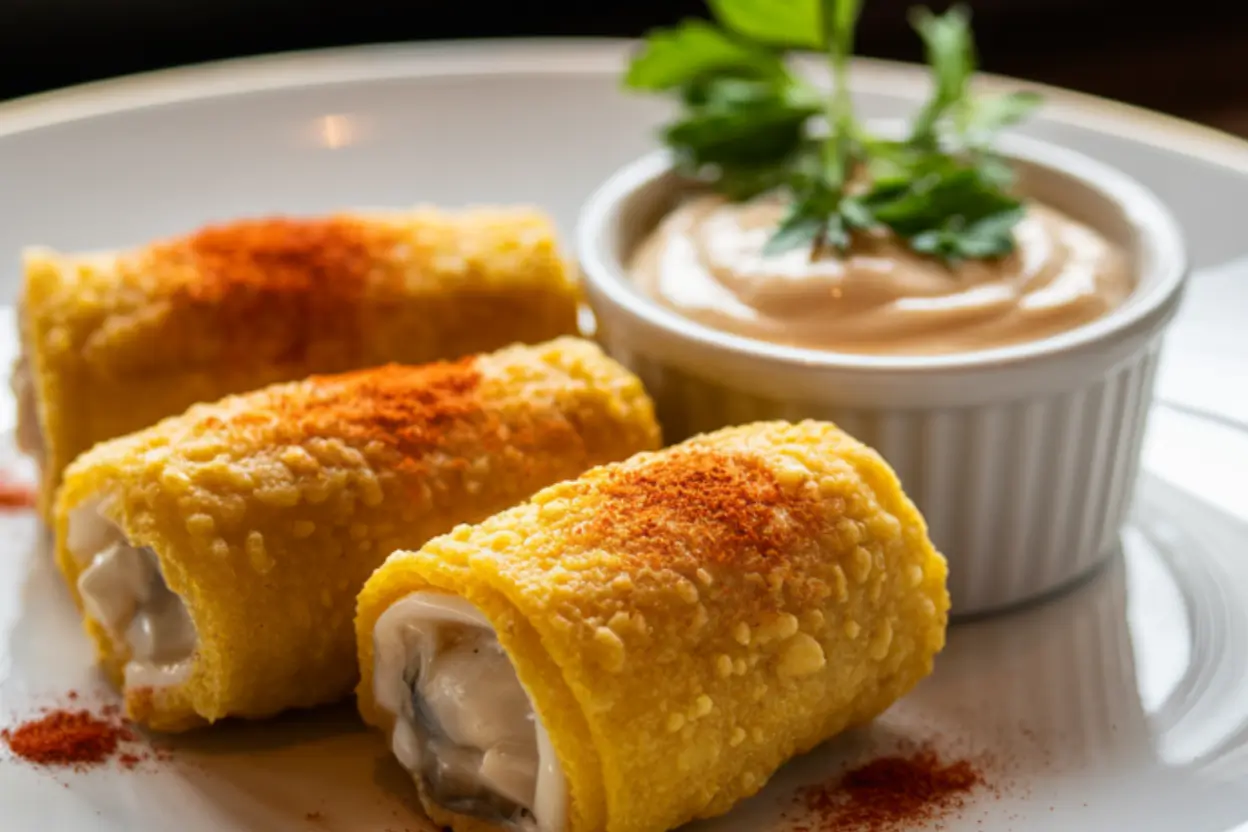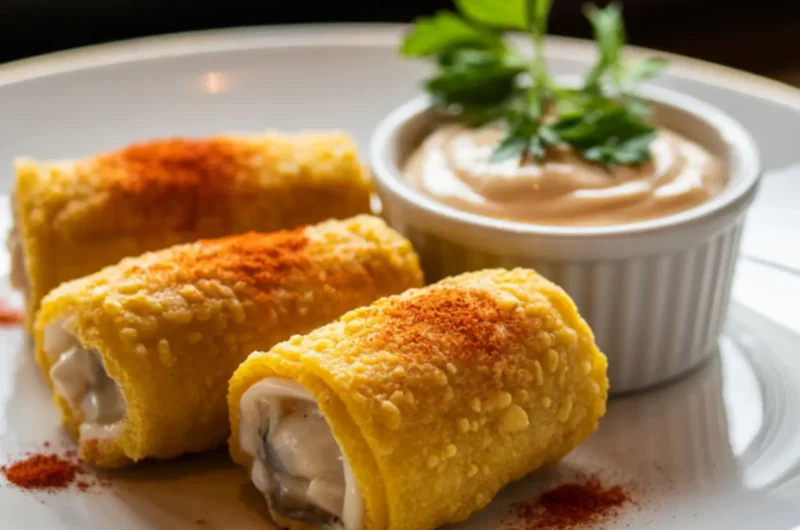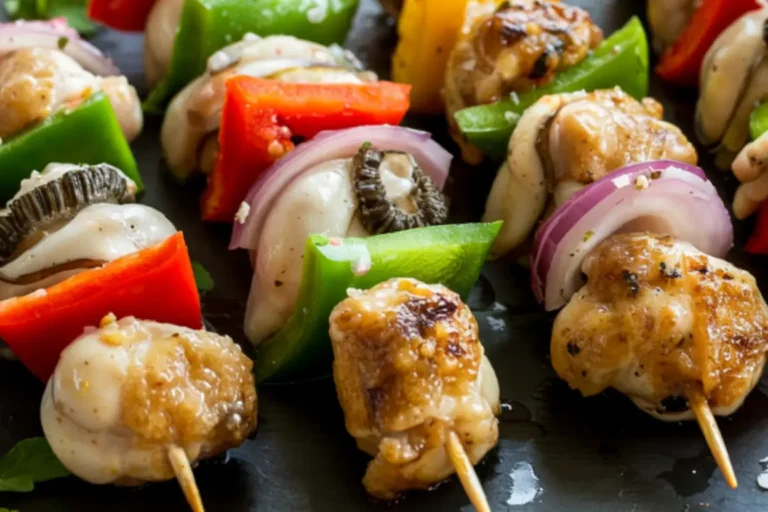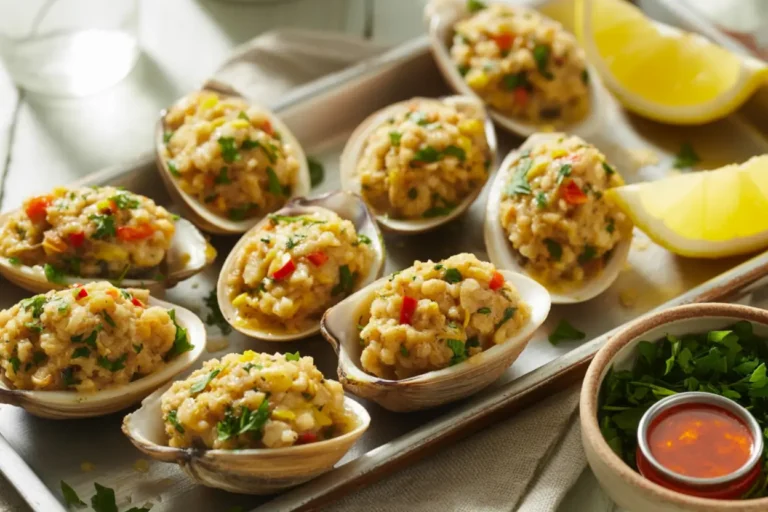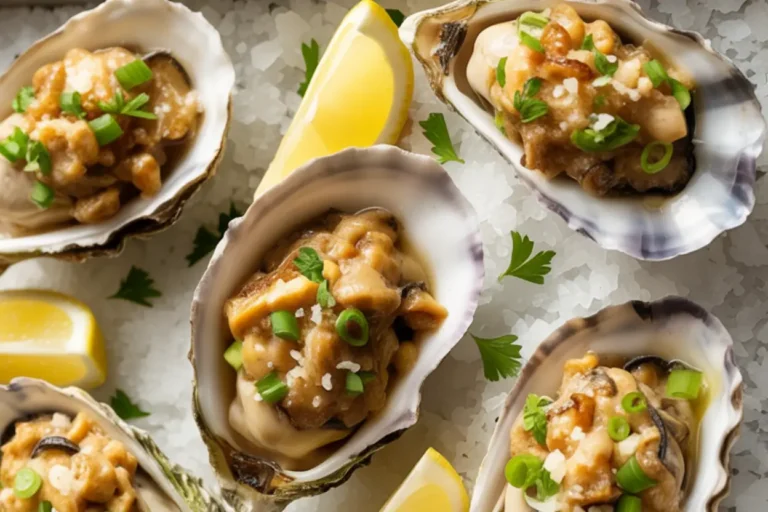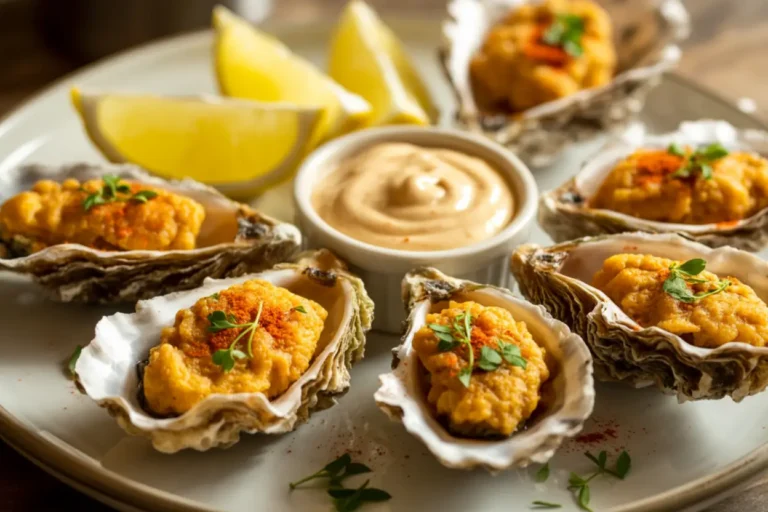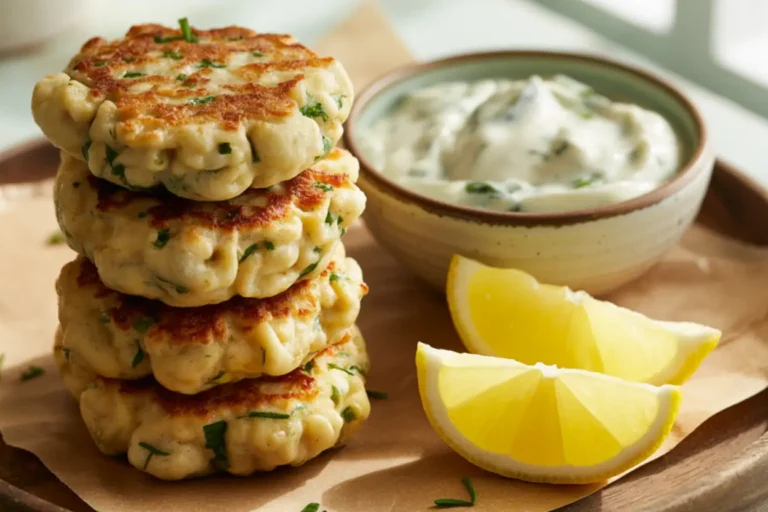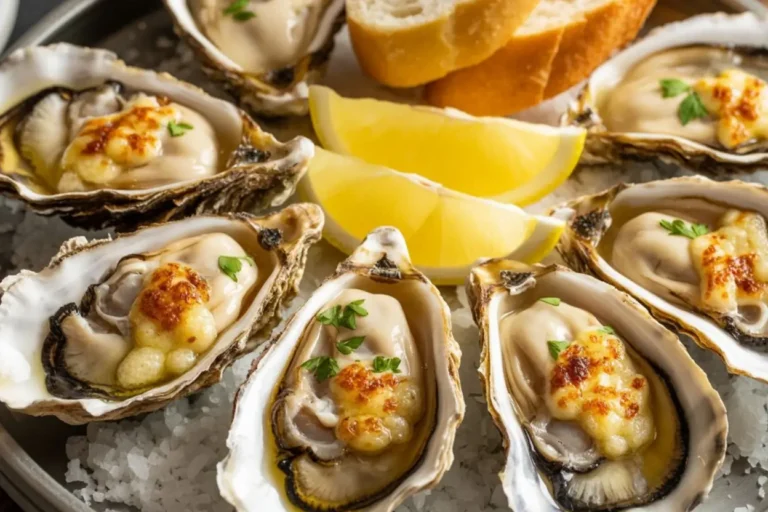Rolled Oyster: How to Make This Crispy Classic at Home
Table of Contents
When I discovered the culinary gem known as the Rolled Oyster years ago, I knew I had to master making this crispy delicacy in my own kitchen. As a Louisville native, I’ve spent countless hours perfecting this regional specialty that surprisingly remains unknown to many outside Kentucky. Today, I’m sharing my detailed guide to creating authentic Rolled Oysters at home – those crispy-on-the-outside, tender-on-the-inside seafood treats that have been delighting palates since the late 1800s.
Thank you for reading this post, don't forget to subscribe!How to Make Rolled Oyster: Quick Overview
Rolled Oysters are a unique Louisville creation featuring fresh oysters encased in a cornmeal-based batter, then deep-fried to golden perfection. Unlike typical fried oysters, these special treats feature multiple oysters “rolled” together in a crispy, seasoned coating that’s roughly the size of a baseball. The contrast between the crunchy exterior and the tender, briny oysters inside creates an unforgettable taste experience that’s both rustic and sophisticated.
The dish dates back to Italian immigrant Phillip Mazzoni, who created them in the 1880s. While they were once a staple in Louisville’s culinary landscape, finding authentic Rolled Oysters has become increasingly difficult, making this home recipe all the more valuable. What makes my version special is the perfectly seasoned batter and cooking technique that ensures each Rolled Oyster achieves that ideal crispy-to-tender ratio that defines this classic.
The Ingredients I Use to Bring My Rolled Oyster to Life
For the Oysters:
- 1 pint fresh shucked oysters (approximately 20-24 oysters)
- 2 cups white cornmeal
- 1 cup all-purpose flour
- 1 tablespoon baking powder
- 1 tablespoon kosher salt
- 2 teaspoons black pepper
- 1 teaspoon garlic powder
- 1 teaspoon paprika
- 1/2 teaspoon cayenne pepper (adjust to taste)
- 3 large eggs, beaten
- 1 cup buttermilk
- 1/4 cup water (as needed for consistency)
- Vegetable or canola oil for deep frying (about 4 cups)
For the Remoulade Sauce:
- 1 cup mayonnaise
- 2 tablespoons Dijon mustard
- 1 tablespoon fresh lemon juice
- 2 tablespoons finely chopped dill pickles
- 1 tablespoon capers, rinsed and chopped
- 2 teaspoons hot sauce
- 1 tablespoon fresh parsley, finely chopped
- 1 clove garlic, minced
- 1/2 teaspoon smoked paprika
- Salt and pepper to taste
Step-by-Step Instructions
Preparing the Oysters
- Drain and rinse the oysters: Pour the oysters into a colander and gently rinse with cold water. Carefully inspect them for any shell fragments and remove if found.
- Pat dry: Using paper towels, gently pat the oysters dry. This step is crucial as excess moisture will affect the batter’s ability to adhere properly.
- Chill the oysters: Place the dried oysters in a bowl and refrigerate while preparing the batter. Cold oysters hold together better during the rolling process.
Making the Batter
- Create the dry mixture: In a large bowl, combine the cornmeal, flour, baking powder, salt, black pepper, garlic powder, paprika, and cayenne pepper. Whisk thoroughly to ensure even distribution of seasonings.
- Prepare the wet ingredients: In a separate bowl, whisk the eggs until smooth, then pour in the buttermilk and continue whisking until fully blended.
- Form the batter: Gradually add the wet ingredients to the dry mixture, stirring constantly. The goal is to create a thick batter that’s slightly thicker than pancake batter but still loose enough to coat the oysters. Add the water as needed to achieve the right consistency.
- Rest the batter: Allow the batter to rest for 15-20 minutes. This gives the baking powder time to activate and the cornmeal time to absorb some of the liquid.
Forming and Cooking the Rolled Oysters
- Heat the oil: In a deep, heavy-bottomed pot or Dutch oven, heat the oil to 350°F (175°C). Use a cooking thermometer to monitor the temperature, as proper oil temperature is critical for perfect Rolled Oysters.
- Form the rolls: Take 3-4 oysters and gently squeeze them together in your hand to form a loose cluster. Using a large spoon, scoop up plenty of batter and pour it over the oyster cluster, using the spoon to shape it into a rough ball about the size of a small baseball. The batter should completely encase the oysters.
- Fry to perfection: Carefully lower each rolled oyster into the hot oil. Cook only 2-3 at a time to maintain oil temperature. Fry for about 4-5 minutes, turning occasionally, until the exterior is golden brown and crispy.
- Drain and rest: Remove the rolled oysters with a slotted spoon and place them on a wire rack set over a baking sheet lined with paper towels. Allow them to drain and cool slightly for 1-2 minutes.
Making the Remoulade Sauce
- Combine ingredients: In a medium bowl, mix together all the sauce ingredients until well combined.
- Chill the sauce: Cover and refrigerate for at least 30 minutes before serving to allow the flavors to meld together.
What to Serve Rolled Oyster With
Rolled Oysters are wonderfully versatile when it comes to accompaniments. Here are my favorite pairings:
- Classic accompaniments: Serve with lemon wedges, the homemade remoulade sauce, and a dash of hot sauce for an authentic Louisville presentation.
- Fresh sides: A crisp coleslaw provides a refreshing contrast to the rich, fried oysters. I particularly recommend a vinegar-based slaw rather than creamy versions.
- Southern-style sides: Hush puppies, fried green tomatoes, or a side of cheese grits complement the Rolled Oysters beautifully for a complete Southern meal.
- Beverages: Iced sweet tea, lemonade, or a crisp white wine like Sauvignon Blanc or Pinot Grigio pairs excellently with the briny, rich flavors.

Top Tips for Perfecting Rolled Oyster
After years of making Rolled Oysters, I’ve discovered these crucial insights:
- Oyster selection matters: Fresh is always best. If fresh oysters aren’t available, high-quality jarred oysters can work, but be sure to drain and dry them thoroughly.
- Temperature control is critical: Maintain your oil at 350°F. Too hot, and the exterior will burn before the interior cooks; too cool, and the rolls will absorb oil and become greasy.
- Don’t overcrowd the pot: Frying too many Rolled Oysters at once lowers the oil temperature dramatically. Patience yields better results.
- Cornmeal quality affects texture: Stone-ground white cornmeal provides the most authentic texture. Yellow cornmeal works but produces a slightly different result.
- Seasoning substitutions: If you prefer less heat, omit the cayenne. For a more complex flavor, add 1/2 teaspoon of Old Bay seasoning to the dry mixture.
- Handling technique: When forming the rolls, work quickly but gently. Squeezing too hard will break the oysters, while too loose a grip won’t form a cohesive cluster.
- Consistency check: If your first Rolled Oyster falls apart in the oil, your batter may be too thin. Add a bit more cornmeal to thicken it up.
Storing and Reheating Tips
Rolled Oysters are best enjoyed fresh from the fryer, but if you have leftovers:
- Refrigeration: Store cooled Rolled Oysters in an airtight container lined with paper towels. They’ll keep for up to 2 days in the refrigerator, though the texture will deteriorate somewhat.
- Freezing option: For longer storage, place fully cooled Rolled Oysters on a baking sheet and freeze until solid, then transfer to a freezer bag. They can be frozen for up to 1 month.
- Reheating methods:
- Oven (preferred method): Preheat the oven to 375°F (190°C). Arrange the rolled oysters on a wire rack set over a baking sheet, then bake for 10–12 minutes, until they’re hot and crispy.
- Air fryer: 350°F (175°C) for 3-4 minutes provides excellent crisp revival.
- Avoid microwave reheating: This will make the crispy exterior soggy and can make the oysters rubbery.
Creating authentic Rolled Oysters at home connects you to a unique culinary tradition that deserves wider recognition. With these detailed instructions and tips, you’re well-equipped to master this Louisville classic and perhaps start a new tradition in your own home. The combination of crispy exterior and tender, flavorful oysters makes this dish worth the effort, whether you’re serving them as an impressive appetizer or as the star of your meal.
Rolled Oyster: How to Make This Crispy Classic at Home
Cuisine: AmericanDifficulty: Moderate6
servings20
minutes10
minutes420
kcalRolled Oyster is a classic deep-fried seafood dish featuring fresh shucked oysters coated in a flavorful cornmeal and flour batter, seasoned with paprika, cayenne, and garlic powder. Fried to golden perfection and served with creamy remoulade sauce, it’s a crispy, savory treat beloved in coastal cuisine.
Ingredients
1 pint fresh shucked oysters (approximately 20-24 oysters)
2 cups white cornmeal
1 cup all-purpose flour
1 tablespoon baking powder
1 tablespoon kosher salt
2 teaspoons black pepper
1 teaspoon garlic powder
1 teaspoon paprika
1/2 teaspoon cayenne pepper (adjust to taste)
3 large eggs, beaten
1 cup buttermilk
1/4 cup water (as needed for consistency)
Vegetable or canola oil for deep frying (about 4 cups)
Remoulade Sauce
Directions
- Prepare the Oysters
Rinse the oysters in cold water, checking for and removing any shell fragments. Pat them dry with paper towels to help the batter stick, then refrigerate while you prepare the batter. - Make the Batter
In one bowl, whisk together the cornmeal, flour, baking powder, salt, pepper, garlic powder, paprika, and cayenne. In another, whisk the eggs and buttermilk until smooth. Gradually mix the wet ingredients into the dry, adding water if needed until slightly thicker than pancake batter. Let rest 15–20 minutes. - Form and Fry the Rolled Oysters
Heat oil in a deep pot to 350°F (175°C). Cluster 3–4 oysters together, coat fully with batter, and shape into a ball. Fry 2–3 at a time for 4–5 minutes, turning until golden and crispy. Drain on a wire rack over paper towels. - Make the Remoulade Sauce
Mix all sauce ingredients in a bowl until well combined. Cover and refrigerate for at least 30 minutes before serving alongside the rolled oysters.
Notes
- Rolled Oysters originated in Louisville, Kentucky, and are often linked to oyster bars and regional fairs. The blend of cornmeal and spices gives a satisfying crunch, while the remoulade adds a tangy kick. Fresh oysters are key to achieving the authentic flavor—avoid overcooking to keep them tender inside.

